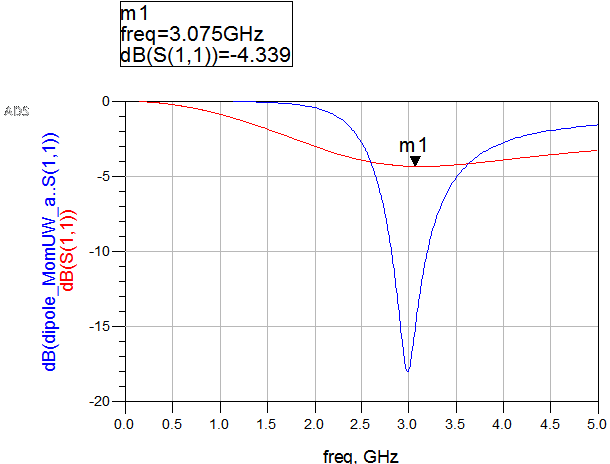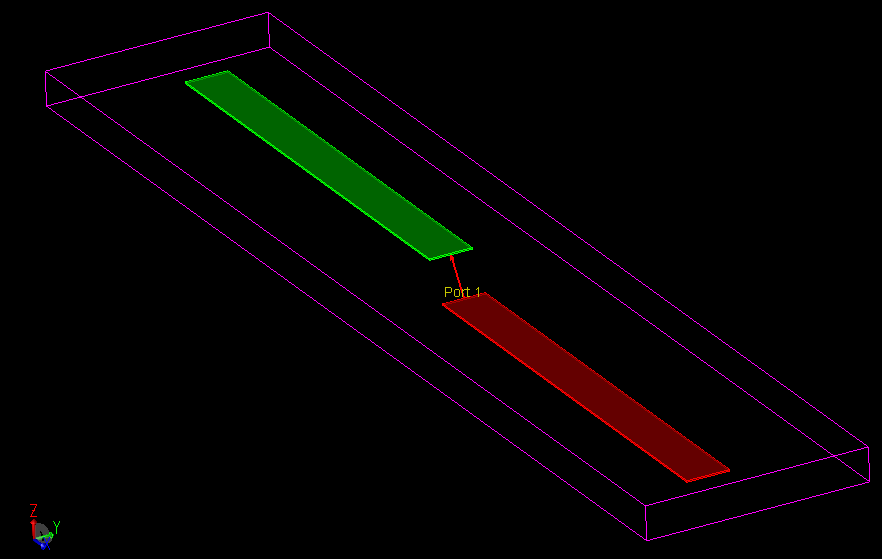ADS antipodal dipole FEM simulation
I am requesting your help about a very strange issue that I am encountering when simulating a printed antipodal dipole with the FEM of ADS.
Whereas the momentum |S11| is very similar to the results I can obtain with both the time and the frequency domain solvers of CST, I observe a HUGE difference when I perform the FEM calculation. Is there a problem of reference or something with the ADS FEM ?
I precise that I would prefer to use the FEM technique since I want to simulate the dipole associated with a power amplifier for which I obtain very good FEM results compared to my measurement.
In order to give you a good vision of my simulation I attach the substrate definition as well as the 3D view of the dipole and the FEM simulation status information where you can see that it converges well.
The red |S11| curve is the FEM and the blue is the Momentum.
Does anybody have an idea? How is it possible to obtain so different results with such a trivial simulation?
Thank you very much for your comments.
Regards.




are you referring to EMPro as FEM?
After various tests of ADS parameters/substrate/ports configurations I finally found out.
The FEM (finite element method) calculation seems more sensitive than the Momentum to the EM calculation box dimensions.
On the EM Simulation Setup -> Options -> Physical Model -> Global tab, I changed the default value of the substrate LATERAL & VERTICAL extensions to Lambda/4 (25 mm for me @3GHz) as we usually do with HFSS when designing the boundary box for a radiating element. It is obvious that a too small boundary box can influence the results and I am very surprise to see that you need to change its size manually with the FEM. Is that a way for ADS to promote the Momentum?
good that you figure it out. you should try EMPro in ADS. probably that will have better correlation with CST and HFSS since EMPRO is 3D and momentum 2.5D simulation.
